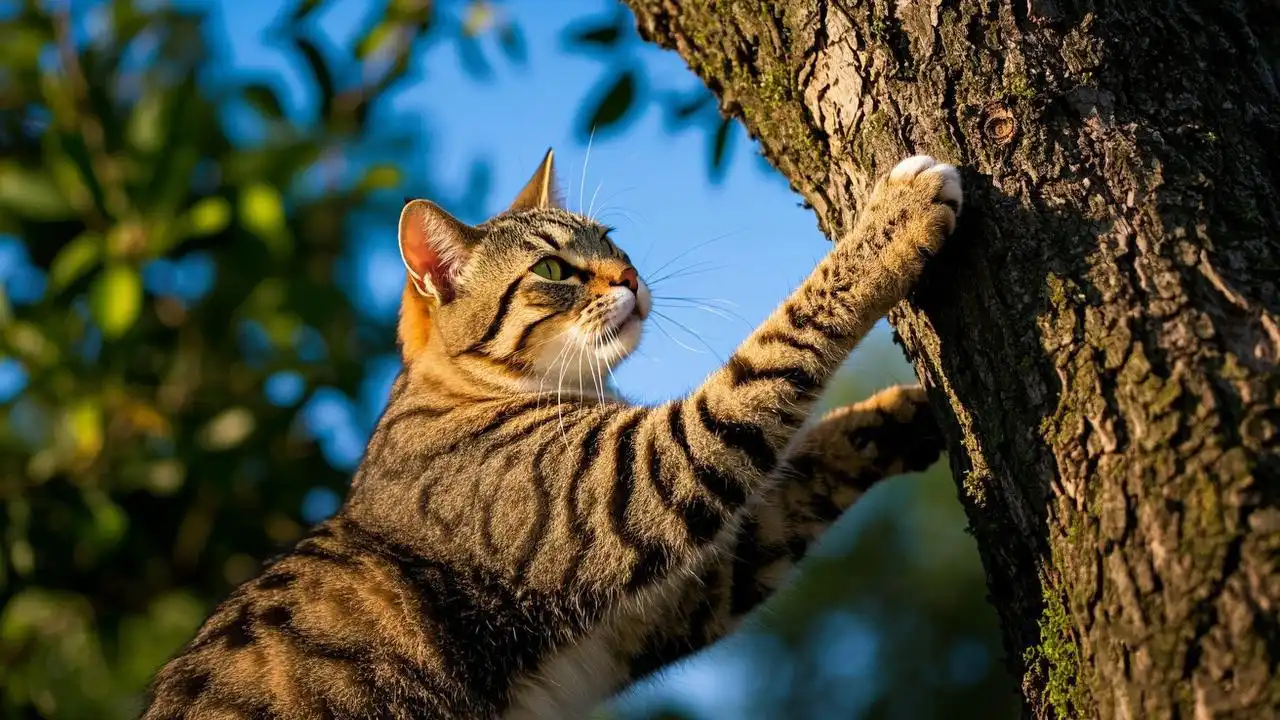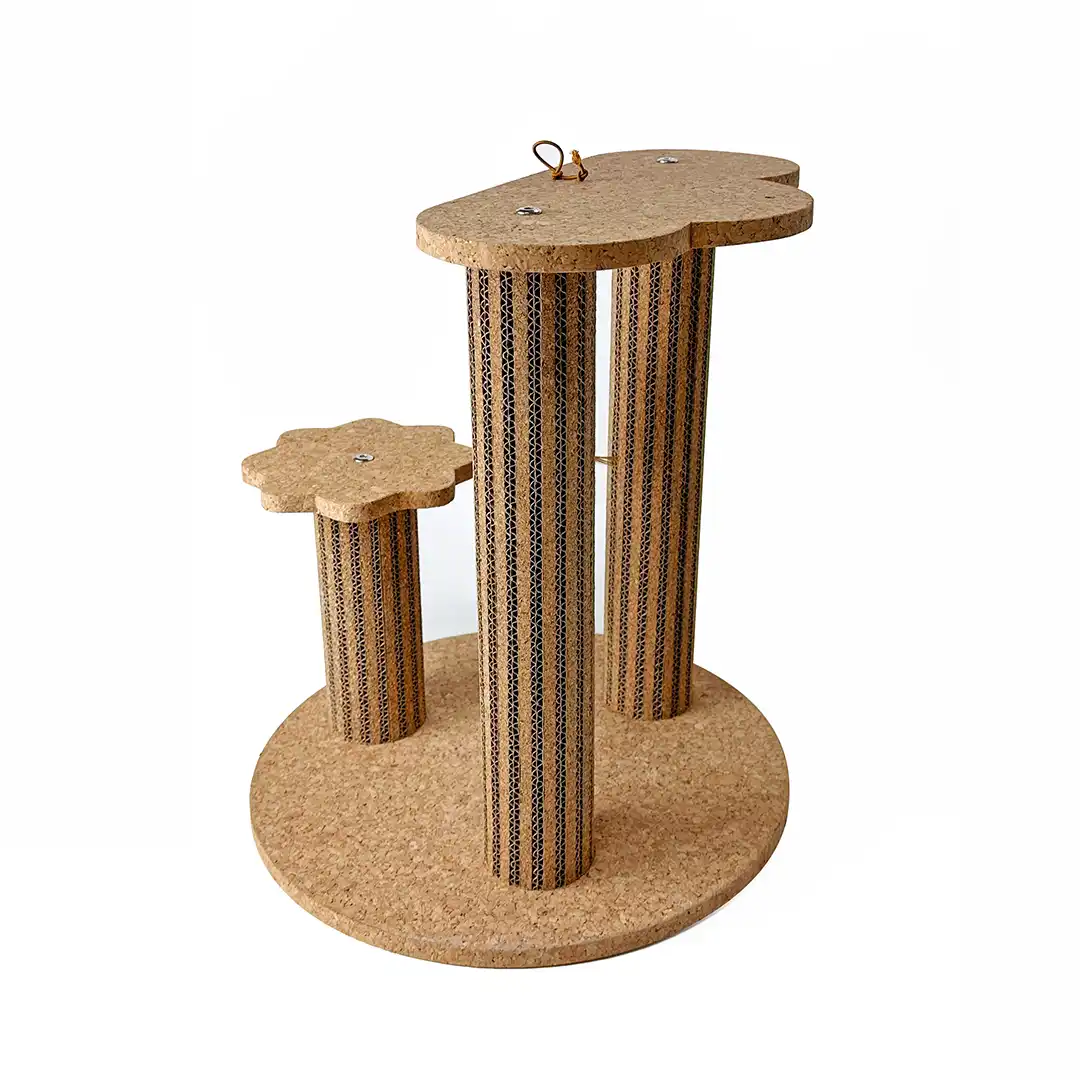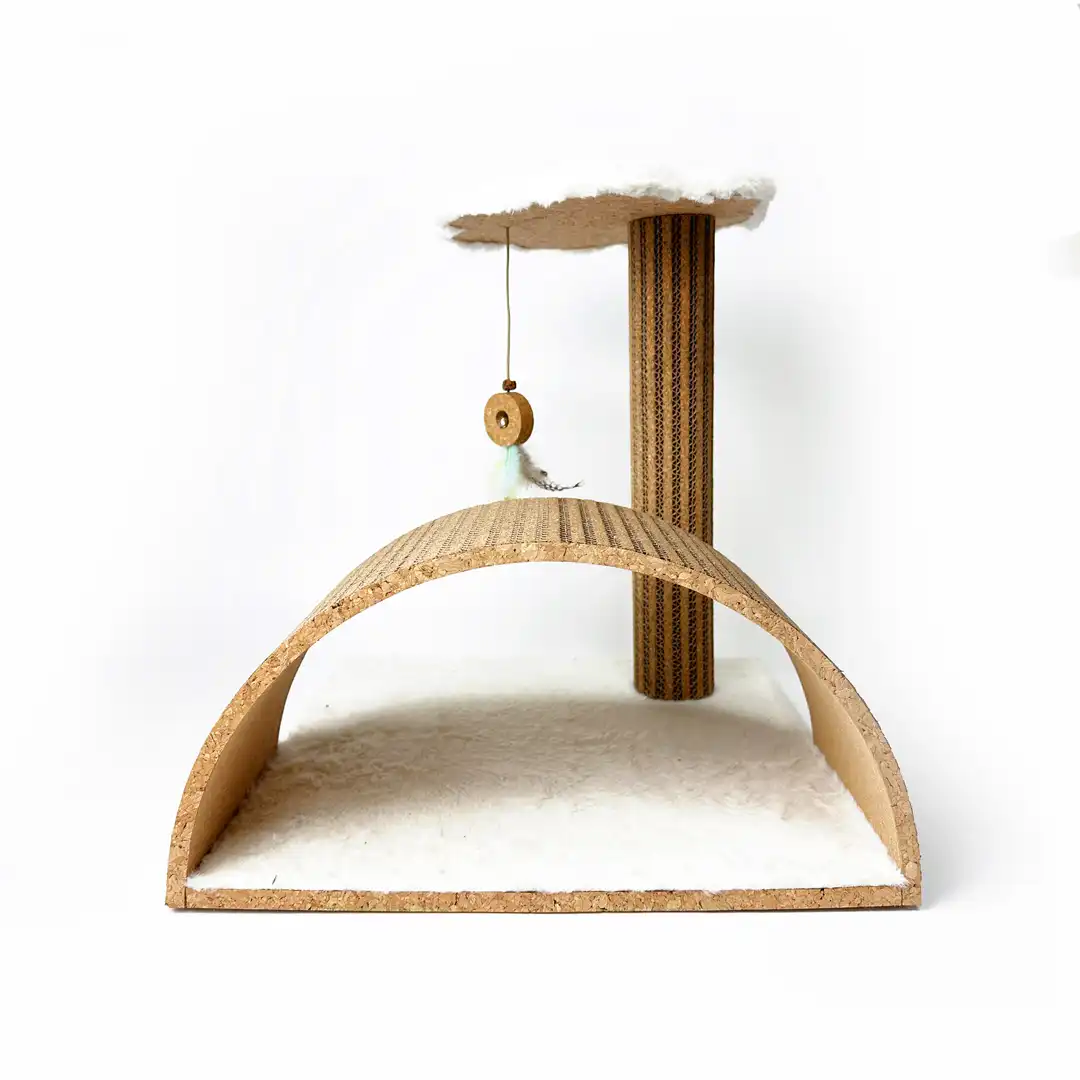How Cat Scratch Trees Enrich Feline Behavior?
2025-07-28 11:17:07
Cat scratch trees play a pivotal role in enriching feline behavior, offering a multitude of benefits that cater to cats' innate instincts and needs. These structures provide a designated space for cats to engage in natural scratching behaviors, which is crucial for their physical and mental well-being. By incorporating a cat scratch tree into your home, you're not only preserving your furniture but also promoting healthy exercise, stress relief, and territory marking for your feline companion. The vertical design of scratch trees allows cats to stretch fully, maintaining muscle tone and flexibility. Moreover, these trees often feature multiple levels, encouraging climbing and perching behaviors that satisfy a cat's desire for elevated vantage points. The tactile stimulation provided by scratching posts helps cats shed old claw sheaths, keeping their claws healthy and sharp. Ultimately, a well-designed scratch tree becomes a focal point for positive feline behavior, reducing anxiety and fostering a more harmonious living environment for both cats and their human companions.

Reasons for Cats' Scratching Instinct
Understanding the underlying motivations behind a cat's scratching behavior is essential for providing appropriate outlets and maintaining a harmonious household. Cats scratch for various reasons, each tied to their evolutionary instincts and physiological needs.
Claw Maintenance
One of the primary reasons cats scratch is to maintain their claws. This action helps remove the outer sheath of the nail, revealing a sharp, healthy claw underneath. Regular scratching keeps their claws in optimal condition, which is crucial for a cat's overall well-being and survival instincts.
Territorial Marking
Scratching serves as a form of communication among cats. When they scratch, they leave both visual marks and scent markers from glands in their paws. This behavior allows them to claim territory and communicate their presence to other cats, even in single-cat households.
Stress Relief and Exercise
Scratching is also a way for cats to relieve stress and engage in physical exercise. The act of scratching allows them to stretch their muscles, particularly in their backs and shoulders. This stretching motion not only feels good but also helps maintain muscle tone and flexibility.
Instinctual Behavior
Scratching is deeply ingrained in feline DNA. Wild cats use scratching to mark hunting and resting areas, and this behavior persists in domestic cats. Providing a heavy duty cat scratching post allows them to express this natural instinct in a constructive manner.
Features of Effective Scratch Trees
An effective cat scratch tree should possess certain key features to ensure it meets your feline friend's needs while also complementing your home decor. Understanding these elements can help you choose the best cat scratching post for your furry companion.
Sturdy Construction
A heavy duty cat scratching post is essential to prevent tipping or wobbling when your cat engages with it. Look for scratch trees with a wide, stable base and quality construction materials that can withstand vigorous scratching and climbing.
Appropriate Height
The ideal scratch tree should be tall enough to allow your cat to fully stretch while scratching. This not only satisfies their natural stretching instinct but also helps maintain muscle tone and flexibility.
Multiple Scratching Surfaces
Cats have individual preferences when it comes to scratching surfaces. An effective scratch tree should offer a variety of textures, such as sisal rope, corrugated cardboard, and natural cork. This diversity allows your cat to choose their preferred scratching medium.
Integrated Play Features
Many high-quality scratch trees incorporate additional features like dangling toys, perches, or hideaways. These elements encourage play and exploration, making the scratch tree a multi-functional piece of cat furniture that keeps your feline entertained and engaged.
Eco-Friendly Materials
Opting for scratch trees made from sustainable, non-toxic materials not only benefits the environment but also ensures the safety of your cat. Natural cork and corrugated paper are excellent eco-friendly options that provide a satisfying scratching experience.

Integrating Scratch Trees: A Stress-Free Guide
Introducing a new scratch tree to your home and encouraging your cat to use it can sometimes be challenging. However, with the right approach, you can make the transition smooth and stress-free for both you and your feline friend.
Strategic Placement
Position the scratch tree in a location your cat frequents or near areas where they currently scratch. Cats often prefer to scratch in high-traffic areas or near their sleeping spots. By placing the tree in these strategic locations, you increase the likelihood of your cat using it.
Positive Reinforcement
Encourage your cat to use the new scratch tree by using positive reinforcement techniques. Praise and reward your cat with treats or affection when they show interest in or use the scratch tree. This positive association will help make the tree more appealing.
Scent Attraction
You can make the scratch tree more enticing by applying catnip or a pheromone spray. These scents can attract your cat to the tree and encourage exploration and use.
Gradual Transition
If your cat is accustomed to scratching furniture, gradually redirect them to the new scratch tree. You can temporarily cover their old scratching spots with double-sided tape or aluminum foil while making the new tree more appealing.
Interactive Play
Engage your cat in play around the scratch tree. Use toys to encourage them to climb, jump, and interact with different parts of the tree. This not only makes the tree more appealing but also helps your cat associate it with positive experiences.
Patience and Consistency
Remember that every cat is unique, and some may take longer to adapt to new scratching surfaces. Maintain consistency in your approach and be patient. With time and positive reinforcement, most cats will come to appreciate and regularly use their new heavy duty cat scratching post.
Regular Maintenance
Keep the scratch tree clean and in good condition. Regular maintenance, such as vacuuming or replacing worn parts, ensures that the tree remains an attractive and hygienic scratching option for your cat.
By following these guidelines, you can successfully integrate a scratch tree into your home, providing your cat with a healthy outlet for their natural scratching behavior while preserving your furniture and promoting overall feline well-being.

Conclusion
Incorporating a high-quality cat scratch tree into your home is an investment in your feline friend's physical and mental health. By understanding the reasons behind cats' scratching instincts, choosing a tree with the right features, and integrating it thoughtfully into your living space, you can significantly enrich your cat's environment and behavior.
At Xi'an Leecork Co., Ltd., we understand the importance of providing cats with safe, durable, and eco-friendly scratching options. Our cat scratch trees, made from 100% natural cork and corrugated paper, offer the perfect balance of sturdiness and comfort for your feline companions. With various sizes available to suit different spaces and neutral tones that blend seamlessly with modern home decor, our products are designed to meet the needs of both cats and their owners.
As a global supplier of cork products since 2002, we've gained the trust of hundreds of clients from over 50 countries worldwide. Our commitment to quality and sustainability has made us a preferred choice for individual buyers, corporate purchasing staff, and offline store owners alike.
Ready to enhance your cat's living space with a premium, eco-friendly scratch tree? Contact us at info@leecork.com to learn more about our products and how they can benefit your feline friend. Join our satisfied customers from around the globe and give your cat the scratching experience they deserve!
References
1. Johnson-Bennett, P. (2011). Think Like a Cat: How to Raise a Well-Adjusted Cat--Not a Sour Puss. Penguin.
2. Bradshaw, J. W. (2018). Normal feline behaviour: ... and why problem behaviours develop. CABI.
3. Ellis, S. L., Rodan, I., Carney, H. C., Heath, S., Rochlitz, I., Shearburn, L. D., ... & Westropp, J. L. (2013). AAFP and ISFM feline environmental needs guidelines. Journal of feline medicine and surgery, 15(3), 219-230.
4. Herron, M. E., & Buffington, C. T. (2010). Environmental enrichment for indoor cats. Compendium (Yardley, PA), 32(12), E4.
5. Overall, K. L., & Dyer, D. J. (2005). Enrichment strategies for laboratory animals from the viewpoint of clinical veterinary behavioral medicine: emphasis on cats and dogs. ILAR journal, 46(2), 202-216.
6. Rochlitz, I. (2005). A review of the housing requirements of domestic cats (Felis silvestris catus) kept in the home. Applied Animal Behaviour Science, 93(1-2), 97-109.
You May Like
0Related Industry Knowledge


